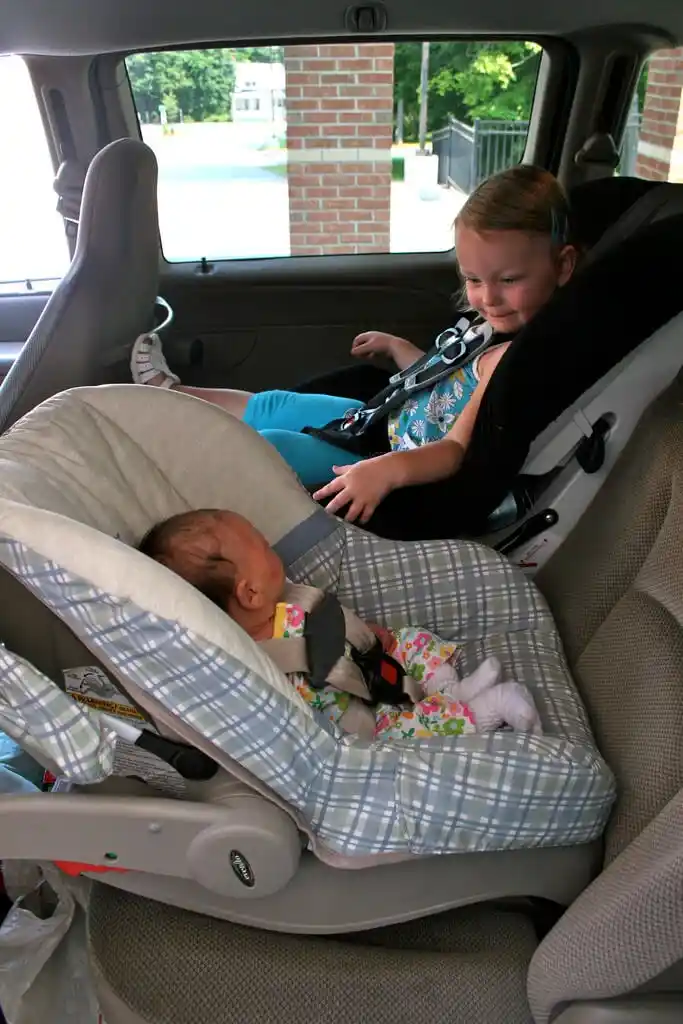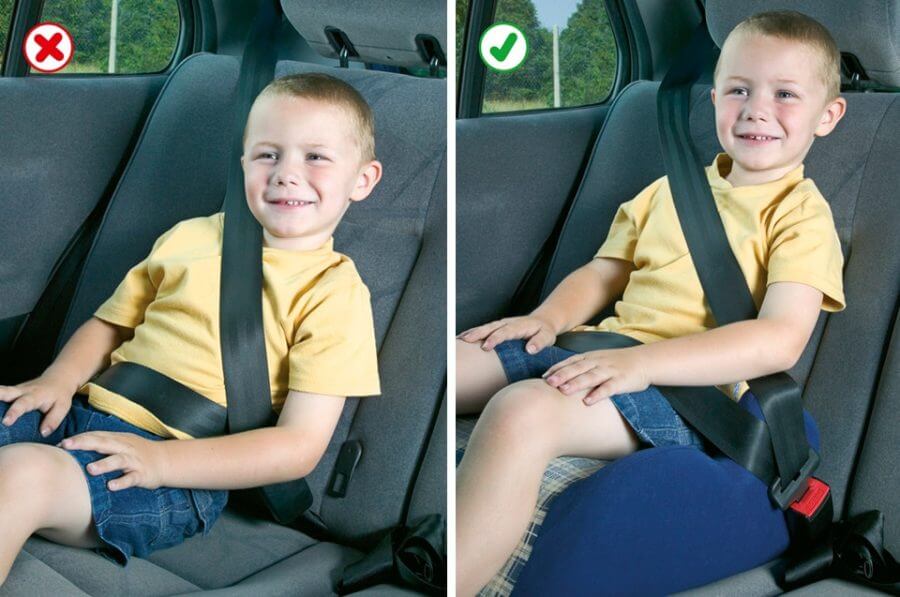Since 2014, the number of daily traffic deaths and injuries in the United States has been on the rise. From 2014 to 2015, the National Safety Council recorded an 8% increase in nationwide motor vehicle fatalities, the largest increase in fifty years. Projections for 2016 only indicate that this number will continue to grow—there were 19,00 traffic deaths in the first six months of 2016, 9% more than the 17,530 in the first six months of 2015, and 18% more than the 16,251 in the first six months of 2014.
The reason for the increase in deaths is not clear—cheaper gas prices and decreased unemployment mean more drivers are on the road than during the recession, but Deborah A.P. Hersman, President and CEO of the National Security Council, also thinks complacency and habit play a role. “These numbers are serving notice: Americans take their safety on the roadways for granted,” she said in a news release earlier this year.
To combat this disturbing trend, the National Safety Council has made some recommendations for drivers:
- Always wear a seatbelt.
- Choose a designated driver before your night out, or take a cab.
- Take breaks during long road trips to avoid fatigue.
- Don’t talk on your phone while driving, even if it’s hands-free.
- Monitor your household’s teen drivers and their habits; teens are three times as likely to crash.
Below, find additional information to help you and the ones you love stay safe on Indiana’s roadways.
Seatbelt Syndrome After an Accident
In the event of an auto accident, your seatbelt is a key form of protection against severe injury and death. When worn properly, these harnesses reduce the risk of death by 45%, and cut the risk of serious injury by 50%. However, it may come as a surprise to learn that seatbelts can also cause serious internal injuries. If you or a loved one has been involved in a collision, it’s important to recognize the symptoms of seatbelt syndrome.
What Is Seatbelt Syndrome?
During an accident, seatbelts tighten up to keep a rider secure in the vehicle. This safety measure prevents passengers being thrown from the car but also exerts force against the body. Anywhere along the chest, neck, stomach, and shoulders can receive blunt force trauma and sustain injuries from the seatbelt in a car accident.
What Are the Symptoms of Seatbelt Syndrome?
Seatbelt syndrome injuries can surface days or even weeks after the actual impact. Internal damage may not begin to show symptoms until after treatment. This could lead to further medical issues such as:
- Abdomen Injury – The seatbelt keeps passengers in a car by exerting a sharp and forceful restraint. Because the abdomen area is home to organs like the spleen and kidneys, blunt force could bruise, strain, or even rupture them. Though the impact may be mild, trauma to a delicate organ could lead to worrisome complications, such as infection, hypertension, or even organ failure.
- Neck pain – Commonly known as whiplash, these delayed injuries to the soft tissues of the shoulder and neck area are caused by a sudden jerking motion of the head in one direction and then another opposite direction. This trauma can display itself in the form of weakness, stiffness, severe headaches, a decrease in range of motion, or even a ringing in the ears (tinnitus).
- Breathing Problems – With the seatbelt tight against the chest, any sudden impact or accident could potentially cause injury to the ribs, lungs, or throat..
- General Weakness – Traumatic injuries caused by a car collision can impact the nervous system in a variety of ways. A seatbelt can deal direct damage to nerves in the spine, arms, neck, lower back, or legs. Delayed and unusual weakness, tingling, numbness, or shooting pains in the extremities are symptoms that should not be ignored.
Speak with a personal injury lawyer today. Call: 317-488-5500
Indiana Car Seat Laws
From a child’s perspective, the car can seem like a magical place. The powerful “vroom” of the engine, the many mysterious dials and knobs, and the world zooming by outside the cool glass windows seems not just entertaining but safe. As a parent, though, it takes work to make sure your automobile is secure and child-friendly. Your focus is heightened, and your eyes are darting around the road, taking extra effort to keep yourself and your child passenger safe the entire ride. But perhaps the most important element of safety is proper car seat usage. So, along with practicing being the best driver in the world for the kid in your car, make sure to review this list of Indiana car seat laws and industry recommendations.
Complete a Free Case Evaluation form now
The Basics Rules for Car Seats
A child’s car seat is designed to protect them during any potential car accident. For many countries (including the United States) these seats are legally required for any child under the age of 8. Additionally, there are booster seats for children between the ages of 8-12 that help to make sure a child fits properly in a seat and can be totally secured by the safety belts included in your vehicle.
It’s important to note that until a certain age, children will need a specific kind of car seat called a rear-facing car seat. These provide maximum protection and will work much more effectively than forward-facing seats. The use of these types of car seats is determined both by age and, sometimes, size.
Click to contact us today
Indiana’s Laws and Industry Recommendations
Across the board, Indiana law states that all children under the age of 8 (regardless of weight or height) need to be properly restrained in a federally approved car seat.
You can also check car seat manufacturers’ websites or packaging for the stamp of approval from federal safety commissions.

Eli Meir Kaplan for Home Front Communications
National Highway Traffic Safety Administration
- Birth-12 months
Legally, all children under the age of 1 must ride in a rear-facing car seat. There are different kinds of rear-facing seats. Infant-only seats will only face the rear, while 3-in-1 seats will allow you to eventually face forward when your child is ready.

- 1-3 years
It’s advised that you keep your child rear-facing as long as possible, as it’s the most effective way to ensure his or her safety. However, once your child reaches the top height and weight recommended by the manufacturer, it’s time to provide them a forward-facing seat that comes with a harness.

- 4-7 years
Again, you’ll want to defer to your manufacturer’s weight and height limits as to when it’s time to move them to a booster seat. However, until that time you’ll want to make sure they’re facing the front with a secured harness.

- 8-12 years
Even if they insist they’re big enough, children should be seated in a booster seat until they’re able to fit in a seat belt properly. A proper seat belt fit has the lap belt snugly lain across the upper thighs, not up on the stomach. Additionally, the shoulder belt should be snug across the shoulder, not crossing the neck or the face. And of course, your child should still be seated safely in the back seat.

There are many different types of car seats and they each have their own set of instructions and features.
At Christie Farrell Lee & Bell we know how important the safety of your child is to you, and hope this insight into Indiana’s car seat laws helps all Hoosiers keep the children in their lives safer on the roadways.
Safety Facts for Indiana Teenage Drivers
Especially in Indiana, where the sky meets the horizon and there’s corn for miles, little feels more freeing than finally getting your driver’s license. However, studies by the Indiana BMV show that teen drivers are at the highest risk for property damage and personal injury on the road. Fortunately, there’s a lot of attention on teen drivers in Indiana. Many laws have been passed to protect teenage drivers in the state and since 2015, teen accidents have decreased by over 30%. These rules exist to keep all drivers safe, both new and seasoned, so it’s important to understand them so you can know what to expect on the road.
Indiana Rules for Teen Drivers
Teenagers in Indiana are allowed to begin driver’s education at age 15 to ensure that they’ll have 15 months in the car with a licensed driver before going out alone. This means that Indiana teens are on the road much sooner than their peers in other states. Driver’s education helps teenagers understand how vehicles operate, what road signs mean, and how to drive defensively. Ultimately, it means they’re prepared to act with reasonable care, or to do everything an educated driver would do. Aside from knowing all of these driving specifics, teens under 18 in Indiana must be aware of designated driving times.
- Teens are not allowed on the roads between 1 and 5 a.m. on Saturdays and Sundays. The only exceptions are in the case of work or a religious event.
- Teenagers cannot drive before 5 a.m. on weekdays or after 11 p.m. Sunday through Thursday.
Rules for teen drivers are put in place to help keep less experienced drivers off the road at hours when accidents are more likely to happen.
Top 6 Causes of Teen Car Accidents in Indiana
When teens practice preparedness for high-risk driving conditions, they can protect themselves and others from danger on the road.
- Distracted driving: The prevalence of cellphones means teens likely have them with them while driving, increasing likelihood of distracted driving.
- Driving at high speeds: Crash risk, severity, and force all increase at higher speeds.
- Passengers: Because driving is new to teenagers, they need to pay close attention. Unfortunately, the more passengers in the car, the more difficult that becomes. In fact, for the first 180 days a new teen driver has their license, the only passengers allowed in the car are adults over the age of 25, or a spouse over the age of 21.
- Safety belts: Teen drivers need to know that everyone in their vehicle must wear a safety belt. If not, the driver will be held responsible for anyone under the age of 18 without a safety belt on.
- Nighttime Driving: For teens, the most severe crashes occur at night, especially at night on weekends. One way to prevent accidents is getting teens plenty of exposure to driving at night with a licensed driver present.
- Driving under the influence: Operating a motor vehicle under the influence of drugs or alcohol is widely known to be illegal. However, teenagers may experiment and a quarter of all teenage driving accidents occur because of drunk driving.
Indiana’s teenage driving laws try to ensure that young drivers get all the experience they need to be safe. Share this info with the new Indiana drivers you know!
Fatigued Driving Causes Accidents
In 2017, Indiana had 1,572 car accidents caused by fatigued driving. While 4 were fatal, 381 of them caused injury, and 1,187 caused property damage. It’s common knowledge that if you are impaired by drugs or alcohol you should never get behind the wheel, but clearly drowsy driving is a serious issue. The U.S. Department of Transportation reports that in 2017, 795 people died in car accidents related to fatigued driving. How many people are falling asleep on the road right now? What do you need to know about driving while tired in order to keep you and your loved ones safe?
How Common is Driving while Tired?
Tired driving is a massive concern for public safety and unfortunately a common occurrence. The AAA Foundation reports that if you get less than 7 hours of sleep a night, you double your chances at getting in a car accident. The Sleep Association says that 35.5% of adults get less than 7 hours of sleep a night which means that there is a huge percentage of people on the road who shouldn’t be. In an article published in the ITE Journal it is stated that driving in these conditions is akin to driving while intoxicated. The study goes on to report that nearly 30% of drivers admit to fighting sleep while behind the wheel within a 30-day period. Shockingly, 4% of people admit to actually falling asleep while driving during that same period.
Since Indiana is in the middle of the country, it has a higher than average amount of semi-truck traffic (which will continue to grow in the foreseeable future). Because of the nature of long-distance hauling, that industry is a breeding ground for fatigued drivers. 13% of semi-truck crashes are caused by driver fatigue.
National Laws About Fatigued Driving
Indiana is the 8th sleepiest state in the country, which means there are plenty of tired drivers out there. Unfortunately, it is difficult for law enforcement officers to determine whether a driver is sleepy if they are pulled over, as adrenaline usually kicks in making the driver appear to be more awake than they are. For this reason, enforcing drowsy driving laws can be tricky, but some states are trying by putting sleepy driver laws on their books.
- In Arkansas, fatigued driving is considered negligent homicide. A driver can be charged if they are involved in a fatal car accident and have not slept in the last 24 hours, or were asleep at the wheel within the last 24 hours.
- Florida and Texas have both declared drowsy driving prevention weeks. Transportation departments like the Department of Highway Safety are encouraged to teach citizens and law enforcement about the dangers of drowsy driving, as well as ways to avoid it.
- In Utah, the Department of Transportation has commissioned studies on which roads are prone to sleepy driving accidents. They placed signage to warn against drowsy driving and direct drivers to a designated sleeping area so they may pull over to rest.
- Nationally, the Federal Motor Carrier Safety Administration has strict rules that prevent semi-truck drivers from driving while tired, such as a maximum 11-hour consecutive drive time which can only be done after a mandatory 10-hour break. Truck drivers are also not allowed to drive after 60/70 hours on duty in 7/8 consecutive days.
Driving while tired results in vehicle damage, injury, and death. Unfortunately, driving while drowsy is still common on our roads and highways and it’s hard to know when other drivers are falling asleep.
Indiana Winter Travel Advisories: An Overview
Winter weather is often unpredictable, especially in Indiana and the greater Midwest. What is predictable, however, is that the Indiana Department of Transportation (INDOT) will issue color-coded advisories during dangerous winter weather conditions.
To get you ready for this year’s inevitable snow and ice, we put together a simple overview of Indiana’s winter travel advisories and what they mean to you.
Yellow (Advisory)
What is it?
Advisories inform the public that normal travel or activities should be limited because of dangerous conditions. Citizens should use caution or avoid these areas. Schools and business may begin to implement their emergency action plans.
What does it mean for you?
Yellow is the lowest level of winter travel advisory in Indiana. That being said, there is a reason that it exists. When your area is under a yellow travel advisory, it is recommended that you use extreme caution when driving or walking. Yellow advisory exists mainly as a way to warn the public to be on alert while travelling.
Orange (Watch)
What is it?
Watches are issued when commissioners determine that road conditions are threatening to the safety of the public. Only essential travel is recommended (i.e., to and from work, emergency situations, etc.). Some areas might not even be passable due to extreme weather. Emergency action plans should be implemented by business, schools, government agencies, and other organizations.
What does it mean for you?
An orange advisory is issued when snowfall is heavy and/or the roads become coated and slick. During orange advisories, you should avoid any travel apart from getting to and from work or reacting to other emergencies.
Red (Warning)
What is it?
Road travel is restricted to emergency personnel only. Citizens should not drive or walk anywhere. If disaster services forces or properly identified officers show up, make sure to cooperate with their emergency action plans. Further and more specific restrictions may be given based on the situation.
What does it mean for you?
Red advisories are issued when the roads and weather conditions are considered extremely dangerous and unfit for any travel. When the Indiana Department of Homeland Security issues a red advisory, they are explicitly telling citizens to stay indoors and not to travel at all. In fact, during red advisories, only emergency responders (police, fire departments, emergency medical services, rescue squads, military, and medical personnel) are permitted to travel.
The current levels of advisory are always mapped out in real time on a county-by-county basis on the INDOT Website. It’s always a good idea to check this information if you need to head out during or after bad winter weather.
Indiana Driving Stats Show Dangerous Trends
An annual review of Indiana traffic safety statistics by the Indiana University Public Policy Institute has revealed some interesting regional differences in Hoosiers’ most common unsafe driving practices. Drivers in Southern Indiana are less likely to use a seatbelt, while those Northern Indiana are more likely to speed.
In 2015, 52% of drivers killed in an Indiana car accident weren’t wearing a seatbelt. 70% of backseat passengers killed were not wearing a seatbelt. However, there has been a huge increase in the number of people wearing seatbelts in Indiana. That has led to an overall 17% decrease in the number of statewide fatalities related to not wearing a seatbelt.
Speeding-related fatalities in Indiana rose from 174 in 2009 to 232 in 2015. Incapacitating injuries caused by a car accident rose by 17% during the same time. Across the state, young male drivers are the most reckless. Lead researcher Dona Sapp called that “frustrating” in an interview with Indiana Public Radio. The annual survey has found young male Indiana drivers to be most reckless for several years now.
From 2009-2015, the annual number of traffic fatalities in Indiana rose over 18%. Serious and fatal accidents were found in the annual data review to be most common overnight. Car accidents also get more common going into and coming out of the weekend, the review found.
As we all use the highways and byways of our state, we hope knowing these statistics inspires you to take every step possible not to become one. Please drive safely and share this information with the other drivers in your life, especially teens.
Have you been injured in a motor vehicle accident? Christie Farrell Lee & Bell has an experienced team of car accident attorneys who can help you explore your options.
Call 317-488-5500 or complete a Free Case Evaluation form



